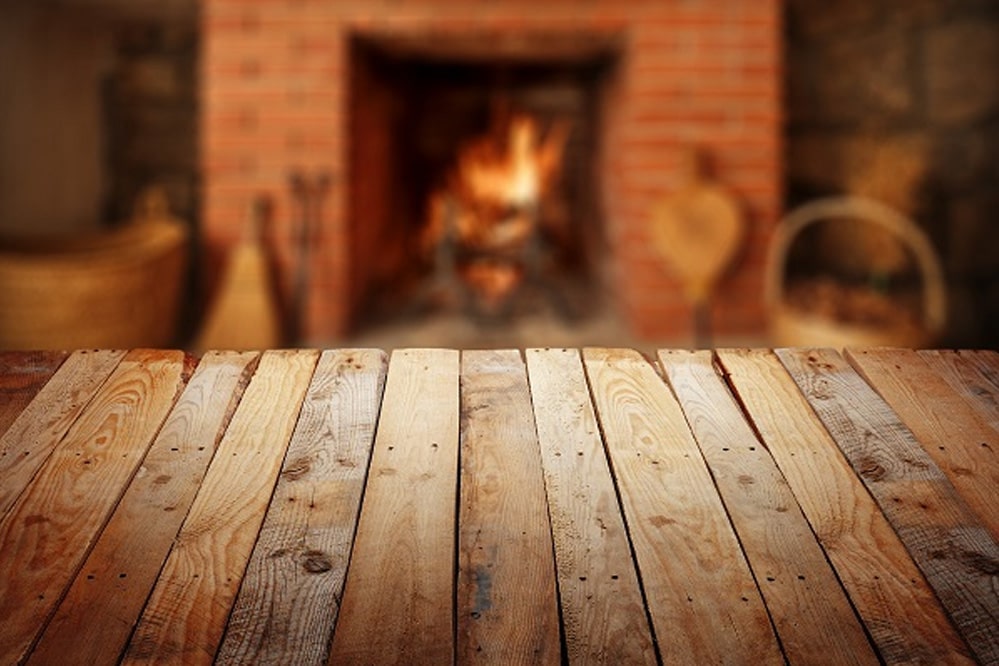Latest numbers show that over sixty percent of all new homes constructed have at least one fireplace now. Log homes especially are incomplete without fireplaces. Most log home owners love the warm glow of a fire from either a wood stove or fire place. The cold weather seems more bearable with a cozy fire going in the fireplace or wood stove in your log home. Besides adding to the value of your cabin, both are a low cost heating alternative. There is no universal agreement on what kind of fixture is best for a log home, whether an open, wood-burning fireplace fits better or a wood stove the more utilitarian option? Today there are several energy efficient fireplace choices, such as vented and non-vented fireplaces, gas stoves, wood burning stoves and zero clearance fireplaces. Each may be appealing for varying reasons and it is best to decide what is best for your log home after careful research.
Depending on the different log home styles, there are all kinds of fireplaces and woodstoves to choose from for design. While fireplaces are gorgeous and inviting on a cold day, they are also inefficient heat sources. But if it is efficiency that is most important to you, then a wood stove or a fireplace insert that may be ideal. When deciding to install a fireplace in your home, the burning question that comes to mind is “Should one go for a gas or woodburning fireplace?” Let us see the pros and cons of different types of fireplaces for your home-
Woodburning fireplaces
With a classic woodburning fireplace, you get to delight in the sensory experience of a “real” fire with the smell of hickory, crackling sound of logs burning and flickering flames. Woodburning fireplaces are ideal for creating a warm, relaxing environment and makes for good supplemental heat source. It is economic too because firewood is easily available in many places. Additionally chopping wood is a good form of physical exercise too.
Cons: Woodburning fireplaces have to have a chimney installed for proper ventilation or else they may be a smoke hazard and even cause odors. The smell is actually from Creosote, a byproduct of the wood fire that coats the lining of the chimney. While you may be able to warm yourself sitting in front of the fire, it does not heat your home efficiently because the warm air flows up and out of the chimney. The draft of warm air being sucked out of the chimney also pulls out warm air from other rooms in your home. Even after the fire goes out, you have to keep the damper open to keep the dying fire from using up the oxygen in your home, so you end up losing more heat from your home. So it is better to use hard woods, such as hickory, ash or oak for fuel, than soft woods, such as pine or spruce to offset the heat loss. There are no controls on a wood burning fireplace, so there is no uniformity in heat output. Storing wood can also take up a lot of space. Smoke from the wood fire causes air pollution inside and outside too as dirty smoke is emitted from the chimney. The chimney and fireplace needs cleaning and emptying the ashes regularly, otherwise it can turn to a fire hazard.
Gas Fireplaces
Gas fireplaces burn cleaner, so there is no regular cleaning up of soot and ashes required. Nor do you have to deal with the smell of smoke in your upholstery and furnishings. There is an element of automation and control with a gas fireplace because you can start a fire simply by flipping a switch. You can even control the flame height. There are flexible installations available with a more even heat output that warms the entire
Cons: While you may not get to enjoy the smell and sound of a wood fireplace, you will have to interact and do less with a gas fireplace. When there is no natural gas line running into your home you will have to fall back on propane gas, which can take up a lot of space outside the home. It may be so designed to be hidden with landscaping, or even buried under ground.
There is a budgetary consideration too when it comes to selecting fireplaces. A good deluxe wood fireplaces can cost as much as $5,000 to $10,000 to be installed and about $500 and above for materials only. Fully installed gas fireplaces can range from $1,300 to $5,000 and more, while gas logs cost usually about $300 to $700 only with an additional $300 to $600 for installation into an existing fireplace.
Fireplace safety should be taken seriously and regular fireplace maintenance is central to keeping it in the best working condition possible. Woodstove fireplaces must be kept clean with the ashes removed regularly and properly disposed in a metal garbage can. For a gas fireplace you should ensure that there is no flammable dust nearby. Use carbon monoxide detectors in your home for safety, when using fireplaces.
You can choose any type of fireplace in the end, as long as you get to relax and enjoy it with near and dear ones. If you are thinking of building a log home, maybe with or without a fireplace, then contact our team at Performance Log Homes to help you get started.


